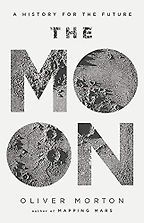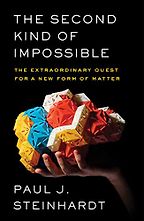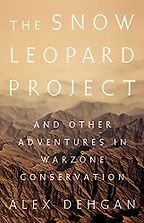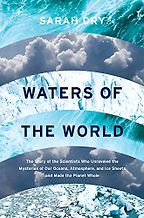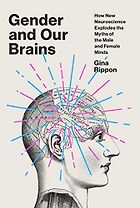You described 2018 as a very good year for science books: how does 2019 compare?
It has been another bright stream. Graham Farmelo’s The Universe Speaks in Numbers beautifully captures the dance of physics and mathematics from Newton to today. Frank Close’s Trinity is a monumental account of Klaus Fuchs, the scientist-spy who funnelled details of the bomb to the Soviets, and Rudolf Peierls, the mentor he betrayed.
Meanwhile, Making Eden, David Beerling’s evocation of how the rise of plant life in deep time created the biosphere, explains anew how plants – to paraphrase Blake – are not just “green things standing in the way”, but essential to climatic stability and all life. As Nathaniel Rich reports in Losing Earth, we – the pre-eminent destabilizers – had a moment in the 1970s and 1980s when we could have turned that tide politically, and failed to. Rich’s trenchant study stands with David Wallace-Wells’s The Uninhabitable Earth and Naomi Klein’s On Fire as the year’s big wake-up calls on climate. Meanwhile, in Sprout Lands, the arborist William Bryant Logan injects optimism by reminding us that trees – key carbon stores – are also capable of long-term reinvigoration.
However, a sense of erosion and upheaval inevitably pervaded books on nature and culture this year. Two explore the subterranean: Will Hunt’s nuanced Underground and Robert Macfarlane’s tour de force Underland. Kathleen Jamie’s Surfacing upends that trend by illuminating what rises from the depths – ancient artefact or long-buried memory. She focuses in part on Beringia – that liminal Arctic region embracing the Bering Strait – as does Bathsheba Demuth in the fascinating environmental history Floating Coast. With Joy McCann’s Wild Sea, an exploration of the Southern Ocean, these steep you in the remote reaches of our wet Earth.
“We are back in embarrassment-of-riches territory in 2019”
I was blown away by historian David Courtwright’s The Age of Addiction, which traces the tangled trail of ‘limbic capitalism’ – industries that target our neurological propensity for pleasure. There are so many more. Caroline Criado Perez’s tome on data bias, Invisible Women; Angela Saini’s study on the return of ‘race’ science in Superior; Christie Aschwanden’s foray into athletic recovery Good to Go; Arthur Holland Michel’s Eyes in the Sky, on the Hollywood-inspired surveillance technology Gorgon Stare; Barbara Tversky’s study on how action shapes thought, Mind in Motion; Philip Ball’s How to Grow a Human, on where and what we are in an era of dished brains and CRISPR. We are back in embarrassment-of-riches territory in 2019.
OK, so let’s turn to the books that made your best science books of 2019 list. Your first choice is The Moon: A History for the Future by Oliver Morton. I loved this book! What makes it a standout for you?
In 2018, when I recalled that the Apollo mission’s finest moment — first footfall on the lunar surface — was about to turn 50, I braced for a deluge. More than 20 commemorations of the event duly arrived. But in The Moon, Morton takes a different tack.
He opts for a holistic portrait of our closest celestial body, while keeping the landing and future possibilities in view. This is a scrupulously researched, formally innovative delight. The writing ever edges into the poetic; it’s just a constant pleasure. At a time when many are eyeing up that dusty expanse again for what Morton calls the “Return”, this book steps back, deftly explaining the science on our satellite and its cultural niche in the charged space between the once and future Moons.
Morton (a science writer now at the Economist, and former Nature editor) is tugged by the Moon’s beauty as it shifts through its phases, scimitar to pearl. But in the next breath he reminds us that lunar science has long been on the wane. Many astronomers dismiss the Moon as a luminous impediment to stargazing. And its “physical mysteries are few” compared to Earth’s, he notes.
Yet he opens the door to re-enchantment. His entwined cultural and scientific history of how we came to understand the Moon is beguiling. For centuries, luminaries from artist Jan van Eyck to Enlightenment scientist Robert Hooke and Victorian industrialist James Nasmyth attempted to ‘read’ the lunar face. Leonardo identified the ‘ashen light’ reflected by Earth on the Moon. With NASA’s lunar-mapping missions and the Apollo landings, the furrowed surface came into proper focus, as did the satellite’s origins in an impact between proto-Earth and a body called Theia. The Moon formed from that “fiery orbital aftermath”.
Get the weekly Five Books newsletter
As for the landings themselves, Morton recreates the thrill of the moment by juxtaposing transcribed audio with analysis. And his survey of new plans for the Moon, from robotic payloads and extractive industries to colonies, is compelling. The list of humans who’ve been there and back (currently, 24) could swell. We examine the hardware, the investments, the involvement of commercial interests. We learn of the wee spacecraft called cubesats, such as NASA’s BOLAS (Bi-sat Observations of Lunar Atmosphere above Swirls), which suggest a way of studying processes on the lunar surface. We’re invited to ponder the possibility of a lunar ‘hab’ for humans in cathedral-sized lava tubes.
Throughout, Morton braids the stories — parodic or science-fictional — that have spurred us towards that enigmatic surface. Stories that, clamped to science, also enable us to envision the future Moon.
What do you make of Morton’s take on the possible human futures in relation to the Moon?
It’s highly realistic, in the sense that he marshals hard science and cogent conjecture to inform his discussions of potential lunar ventures decades or centuries hence. You feel on firm ground, wandering among moonbases for mining volatiles and baked-regolith-brick dwellings.
But we know it’s not all just hardware and infrastructure. A human on the Moon is still a human, restless, flawed, carrying a ton of baggage. How do we imagine ourselves into that future? Here the speculative thinking of novelists comes into its own. Robert Heinlein’s 1966 The Moon Is a Harsh Mistress, for instance, envisions the satellite as a penal colony and hotbed for revolt. Morton is not, of course, seeking prophecies about actual developments, but insights into hypothetical life on the “Unworld”. We pack our Earth-born systems of economics and governance — and our demonstrable failings — into the luggage. As he puts it, “space is an extension of the Earth, not an exemption from its strictures. An antagonistic world will create a Moon to match.”
In my view, we see the shadow of that in purely commercial conceptualisations of the Moon – lunar orbit as an adventure for the super-rich, industrial dreams of platinum mining. Inanimate rock it may be, but the Moon is ultimately more than a new colonial base for the same old inequities. Or so I would like to think.
Moving on to the next of your best science books of 2019, The Second Kind of Impossible by Paul Steinhardt. What makes this book so remarkable in your view?
It’s a window on the process of discovery, a blow-by-blow account of a long wrangle with theory and evidence. Paul Steinhardt — a cosmologist fascinated by novel forms of matter — relates his indefatigable decades-long quest for an ‘impossible’ material, the quasicrystal, with Holmesian intensity. And yet the journey is never less than engaging. Steinhardt immerses us in the human stories as well as the maths and physics. This is a book offering a real sense of the collaborative, generous-minded aspect of doing science.
As for the thing discovered, Steinhardt delivers an excellent primer on his quarry. Quasicrystals are a form of matter upending the rules on crystalline structure. Crystals are periodic, or repeating, arrangements of atomic clusters forming regular shapes such as tetrahedrons. These shapes fit together neatly no matter how you rotate them — a phenomenon known as rotational symmetry. According to the laws, only one-, two-, three-, four- and six-fold symmetries are possible. That is, until the 1980s, when the work of Steinhardt, his collaborators and others began to reveal the possibility of other symmetries — and of quasicrystals.
I loved how Steinhardt and then PhD student Dov Levine approached their theoretical experimentation on atomic arrangements — with paper, magnets, Styrofoam and pipe cleaners. Soon it resembled “an arts-and-crafts project gone berserk”. The two then discovered Penrose tiling – geometric patterns discovered by mathematical physicist Roger Penrose that had the necessary symmetry. It was the push they needed to give their work legs.
“This is a book offering a real sense of the collaborative, generous-minded aspect of doing science”
A thrilleresque edge emerges with a startling coincidence. In the early 1980s, materials scientist and Nobelist-to-be Daniel Shechtman had stumbled upon an ‘impossible’ 10-fold symmetry in grains of an aluminium-manganese alloy. When Steinhardt discovered Shechtman’s work in 1984, he was – briefly – the only person who’d seen both that experimental pattern, and the theoretical one he and Levine had worked on. It’s a riveting moment in the book. Two teams, working 150 miles apart, had made wholly complementary breakthroughs unbeknownst to each other. There are more scientific epiphanies, mixed in with hard knocks: Steinhardt is a master at conveying the emotional seesaw of lab life.
But he takes it further: all the way to Siberia. Amid cooling interest in the scientific community, finding a quasicrystal in nature becomes an imperative. The narrative enters geological and ultimately expeditionary realms. Steinhardt and a by-now substantial team go quasicrystal-panning in Russia’s far east, dodging mosquitoes, freezing rain and gargantuan Kamchatka bears. It’s to Steinhardt’s credit that this mud-drenched phase of the adventure does not eclipse, in terms of thrills and spills, the long slog of labwork.
By the time he and the many scientists he’s worked with triumph, you’re cheering with them. I emerged feeling as if I too have traversed a tumbled landscape of diffraction patterns and tundra into a new understanding of the world.
Your third choice, Alex Dehgan’s The Snow Leopard Project, had escaped my attention even though I have at least one lifelong snow leopard enthusiast in the family. What does this book teach us?
I’m also fascinated by snow leopards – and Afghanistan. So I was intrigued when a new conservation-biology study focusing on both sailed into view. The Snow Leopard Project is frontline science of a rare kind. It reaffirms an old lesson: that conservation is most successful when it works for human stewards of the wild as well as for biodiversity.
Field biology in Afghanistan — riven by conflict for 40 years and one of Earth’s most remote and spectacular countries — is bound to be extraordinary on all kinds of levels. And so this book proves. Alex Dehgan’s account of conservation along the country’s ‘biological Silk Road’ is alternately hair-raising, poignant and enlightening. He recounts the setbacks and stresses of assembling a crack team under impossible conditions, of field research in a bullet-strewn wilderness, of setting up the country’s first national park in Band-e Amir. It was, he shows, a grueling, complex operation with many moving parts.
Dehgan is himself complex: an evolutionary biologist versed in both policy and entrepreneurship. He has been chief scientist of the US Agency for International Development (USAID), and more recently co-founded Conservation X Labs, which applies a start-up approach to conservation solutions. He cut his conservation teeth in tough locales: Russia, Madagascar, Iraq. You can see why the challenges of Afghanistan and elusive big cats drew him. George Schaller was, of course, the first biologist to study the snow leopard five decades ago, and he has trekked through its range from the Far East to Central Asia. Dehgan in some sense follows in those tracks, and their paths cross in his account. But Dehgan has very much blazed his own trail.
Five Books interviews are expensive to produce. If you're enjoying this interview, please support us by donating a small amount.
His narrative begins in 2006, when he was tasked by the Wildlife Conservation Society to set up an office in Kabul. WCS wanted to take the ecological pulse of the Wakhan Corridor, enclosed by vast mountain ranges from the Hindu Kush to the Kunlun. The aim was to study two apex species, snow leopards and their prey, Marco Polo sheep. Dehgan conveys the intricacies of such research in brutal terrain, complicated not only by conflict but an active wildlife trade. He trains that observational acuity on the human animal, too. We get up close to the letdowns, shocks and crazy risks his team endure. We learn of the odd constellations of disaffected individuals who are drawn to war zones. And we’re drawn into the tense negotiations Dehgan must endlessly initiate with everyone from politicians to border guards. All this gives the book a relatable immediacy.
I’m deeply struck by one thing most: the optimism of the Afghan people, whom Dehgan notes remain “resolute in finding joy, seeking happiness, and moving forward”. He charts how the identity of Afghans — so many of whom still live close to the land — is powerfully linked to the preservation of its wildlife, even in the midst of the mines, the explosions, the opium addiction afflicting entire communities. That, in the end, was a huge factor in making Band-e Amir possible.
Questions of gender and science seem to have received particular attention this year. One thinks of Invisible Women by Caroline Criado Perez, among others. We’re now at book number 4 of your list of best science books of 2019. Tell us about The Gendered Brain by Gina Rippon.
It’s a sizzling response to the ongoing intensity of need, in society and some scientific enclaves, to ‘sex’ the brain. That is an issue the psychologist Cordelia Fine, among others, has explored in studies such as Delusions of Gender. But we need to revisit it, Gina Rippon argues: myths and misconceptions persist. She accordingly debunks a great deal of bad science and received wisdom, while also constructing a realistic picture of the brain within its environmental context.
Rippon, a cognitive neuroscientist, reminds us that everything from careers to clothing are still viewed by millions through gender-tinted glasses. Newborns are still swathed in pink or blue. And these insistent stereotypes extend to our thinking about the brain. That’s gone on, with alarming regularity, from the rise of proto-anthropology in the 18th century, when women were routinely viewed as unstable, neuronally defective weaklings.
She examines each stage in the development of this sexist trope. Relative size, for instance: on average, men’s brains are bigger, as are their brain structures. Yet there is significant uncertainty over the relationship between brain structures per se and expressions of behaviours they may putatively be involved in. Hormones? She reminds us that while key in determining the development of genitalia (for instance), hormones are much harder to defend as shapers of brains and, ultimately, behaviours. She also looks at psychology, particularly how data is collected: what is being asked, how it’s asked, and why. Contextual bias lingers in scientific practice, as Criado Perez revealed so exhaustively in Invisible Women.
Rippon also delves into controversial claims made on the basis of neuroimaging (her specialism). The methodology has led to a larderful of neurobaloney, she argues. She takes us back, for instance, to the overly heady days of early fMRI scanning in the early 1990s, when patches of brain ‘lighting up’ in response to, say, the thought of chocolate, were misconstrued, massaged and extended until the brain was seen as biological proof of almost any kind of behaviour. And all the time, the idea of gendered brains simmered on.
This analysis of how so much has gone wrong occupies only part of the book, however. Rippon also lays out a more reality-tempered picture of what we know. She reminds us, for instance, of neurological plasticity — that “brains reflect the lives they have lived”, that brain and world have a two-way relationship. She explores in depth the science of the ‘social’ brain – our continual referencing of what others are thinking or feeling – that reflexively reminds us of self-identity. Add in the predilections and preconceptions of parents, teachers, coworkers and others, and we begin to see “how entangled our brain is with its environment”, as she puts it.
“She examines each stage in the development of this sexist trope.”
Rippon explores the infant brain at length. She shows, for instance, how extensive research by psychologists Paul Bloom, Karen Wynn and Kiley Hamlin on moral evaluation skills in five- and eight-month-olds reports no sex differences. Studies with older babies and children, however, do show them. Is that biological development, or internalised social expectations and gender signalling at work? One chapter looks at the differing ‘guidance rules’ doled out to boys and girls, which may activate an ‘inner critic’, with links to brain systems in the anterior cingulate cortex. In that context, Rippon quotes the lawyer and founder of tech organisation Girls Who Code, Reshma Saujani: “We’re raising our girls to be perfect, and our boys to be brave.”
Throughout, Rippon is nuanced — for instance, critically examining binary thinking in relation to gender identity.
I left this book amazed at how gender essentialism has so often been slapped onto the fatty mass within our skulls. As Angela Saini among others have made clear, the drive to find difference too often seeds a bid to ‘prove’ superiority. Rippon doesn’t ‘deny’ biology. She sees it as meshed with variables: our brains, she argues, are essentially mosaics “of past events and future possibilities”.
When I first saw Sarah Dry’s Waters of the World on your list of best science books of 2019 I thought, ‘another book about climate change.’ But this is something quite different. “This book is as much a history of emotion as it is a history of science,” Dry writes. And she makes the striking choice of telling her story through “stories of water.” What do you make of it?
It’s inspired. Sarah Dry is a science historian specialising in climate. And it is history, she shows, that helps to ground our understanding of the nature and findings of baggy multidisciplinary fields like climate science. So at a time when millions of people worldwide are demonstrating over the climate crisis — basically fighting for a future — Dry looks to the past: to the very roots of the science of planetary change, told through the stories of six dedicated researchers.
She follows the water. Over her 150-year chronicle, “water traces not the flow of energy but the flow of human activity and thought”, from Victorians such as the physicist John Tyndall and astronomer Charles Piazzi Smith to the 20th-century meteorologist Joanne Simpson. This band of originals become names to conjure with. Proto-climatologist Alexander von Humboldt may have speculated about industry’s impact on climate, but it was these subsequent generations of scientists who finally parsed the “wild confusions of the earth’s environment”. Ultimately, their scattered scientific endeavours were synthesised.
Tyndall was deeply interested in glacial movement; Piazzi Smyth, in high-altitude sky-scanning and the behaviour of water vapour. The two became explorers by default: Tyndall in the Alps, Piazzi Smyth among the peaks of Tenerife. I was gripped by Dry’s descriptions of Tyndall, who alternated between manic mountaineering, dogged experimentation and public lectures. Tyndall’s labwork confirmed the heat-trapping properties of water vapour and carbon dioxide (and he is credited for it, although amateur American scientist Eunice Foote had beaten him to it by three years, Dry tells us). In a po-faced moment, James Clerk Maxwell objected to Tyndall’s ‘theatricality’ in communicating science, but Tyndall emerges as a scientific visionary in awe of the continuity of nature, the flow between energy and matter.
“At a time when millions of people worldwide are demonstrating over the climate crisis…Dry looks to the past”
The 20th century saw more doggedness and brilliance, from physical oceanographer Henry Stommel’s theories on complex ocean currents to palaeoclimatologist Willi Dansgaard’s early work on Greenland ice cores. Joanne Simpson was a revelation. The first women in the United States to earn a doctorate in meteorology, in 1949, she flew research aircraft into tropical cloud masses over Bermuda and seeded clouds (and hurricanes) experimentally. Her work helped to reveal how cloud dynamics drive large-scale circulation in the atmosphere and seas.
I’m old enough to recall the debut of the Whole Earth Catalog, part-inspired by images of Earth from space. Seeing the planet entire felt transformative. But in Waters of the World, we’re shown that we were primed to see that, by research evolving long before Apollo. As Dry puts it, the “self-evidence of that wholeness is a very hardwon result”. She has wonderfully conveyed how scientific diversity worked to reveal scientific unities — how the insights of generations of astrophysicists, geologists, oceanographers, glaciologists and meteorologists converged and pieced Earth systems together. That collaboration through time and space has fostered resilience in practice and robustness in discovery. In denialism-drenched times, that is a vital insight.
Five Books aims to keep its book recommendations and interviews up to date. If you are the interviewee and would like to update your choice of books (or even just what you say about them) please email us at [email protected]
